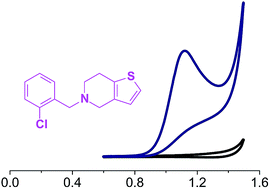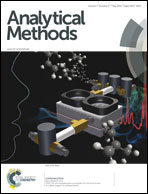Electrochemical study of the antiplatelet agent ticlopidine and its voltammetric determination in pharmaceutical and urine samples using a boron-doped diamond electrode
Abstract
In the present study, the electrochemical behavior of ticlopidine was investigated by cyclic voltammetry, square-wave voltammetry and differential pulse voltammetry using a cathodically pretreated boron-doped diamond electrode. Ticlopidine exhibited one well developed and irreversible oxidation peak suitable for analytical purposes at about 0.95 V (vs. Ag/AgCl 3.0 mol L−1 KCl) in BR buffer solution (pH 5.0). The electrode reaction of the analyte was found to be a diffusion-controlled process. At optimized differential pulse voltammetric parameters (modulation amplitude of 150 mV, scan rate of 10 mV s−1 and modulation time of 10 ms), the obtained analytical curve was linear for the ticlopidine concentration range of 3.9 to 38.4 μmol L−1 with a detection limit of 0.66 μmol L−1. The influence of possible interfering compounds was studied as well. The proposed method was applied with success in the determination of ticlopidine in pharmaceutical and urine samples with good accuracy and precision.


 Please wait while we load your content...
Please wait while we load your content...